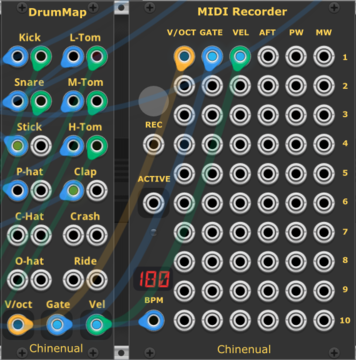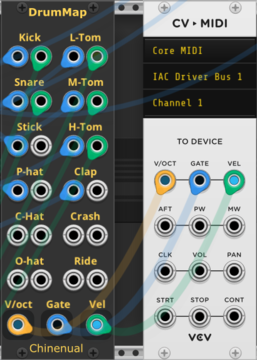I’ve added a new module to the plugin - DrumMap - which converts percussion gates to V/oct based on General MIDI standard drum note assignments.


From the changelog:
Improved support for capturing percussion events:
- If a track’s V/OCT input is not connected, the recorder defaults to MIDI C4 (so for drums, only a GATE input is necessary). When a polyphonic gate is connected, but no V/OCT, then each channel of the GATE gets a unique MIDI note pitch.
- A new module, DrumMap, maps named gates to General MIDI “drum” notes (which can then be plugged into the MIDIRecorder or sent to a live drum machine via the core CV-MIDI module).
Looking forward to your feedback. Get a beta at: Release Release v2.3.0-beta1 · chinenual/Chinenual-VCV · GitHub